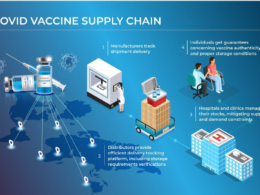This is an excerpt of the report “Supertrends 2022 — Here to stay. From societal trends to investor impact.” , with the title above, focusing on the topic in question.
Credit Suisse
Michael Strobaek; Nannette Hechler-Fayd’herbe, Daniel Rupli
July 2022
Excerpt by
Joaquim Cardoso MSc.
Health Revolution — Institute
Institute for continuous health and digital transformation.
Supertrends — Unit
July 1, 2022
Synthesis of Supertrends:
- 1.Anxious societies — Inclusive Capitalism
- 2.Infrastructure — Closing the gap
- 3.Technology — At the service of humans
- 4.Silver economy — Investing for population aging
- 5.Millennials’ values — Gen Z and Y
- 6.Climate change — Decarbonizing the economy
Synthesis of Technology Trends:
- 1.Digitalization — Meet the Metaverse
- 2.Virtual reality — Living in a virtual world
- 3.Artificial intelligence — Digital age workhorse
- 4.Industry 4.0 — Smarter supply chains
- 5.Healthtech — Now entering the hologram

1.Digitalization — Meet the Metaverse
The digitalization trend has clearly gained momentum during the pandemic, as technology makes further inroads into our daily lives.
Remote working, video collaboration, online shopping, virtual doctor visits, and the use of augmented reality-based advice to provide remote maintenance services for machines helped make our lives easier during a difficult time.
As a result, IT spending by enterprises is growing steadily. One area that shows accelerating growth coming out of the pandemic is cloud investments.
By 2025, 51% of IT spending in application software, infrastructure software, business process services and system infrastructure markets will shift from traditional solutions to the cloud, up from 41% in 2022, according to estimates published in February 2022 by the technology research firm Gartner®17.
This means more than USD 1.3 trillion in enterprise IT spending is at stake in 2022, rising to nearly USD 1.8 trillion in 2025, according to Gartner®.
By 2025, 51% of IT spending in application software, infrastructure software, business process services and system infrastructure markets will shift from traditional solutions to the cloud, up from 41% in 2022, …

Source Gartner® (February 2022)A, Credit Suisse
Another promising source of growth for the digitalization investment theme is a digital ledger technology-based Metaverse, which should contribute to rising demand for IT infrastructure, processing power, advertising, digital payments and social media.
Companies that can adapt their business cases to these new technologies will likely gain a competitive advantage.
The use cases in the Metaverse are manifold for both consumer and enterprise-focused businesses.
Advances in work collaboration, social media, entertainment, virtual worlds, education, fitness, design or e-commerce are already visible, and sectors such as healthcare, real estate and manufacturing could be among the beneficiaries.
Indeed, there is an atmosphere of transformation like in the 1990s with the dawn of the internet era.
Indeed, there is an atmosphere of transformation like in the 1990s with the dawn of the internet era.
Many new players have entered the market over the past two years, underscoring the renewed “entrepreneurial spirit” within the sector.
Established companies — both in the IT sector and beyond — are preparing for the Metaverse.
For example, a French financial services provider developed with Unity Software a 3D-augmented simulation tool that enables real estate clients to visualize the city of Paris in the past, present and future, helping to improve the development, management and sales activities within its real estate department.
Facebook, renamed Meta Platforms, sees the Metaverse as a natural evolution of the internet to Web 3.0 from Web 2.0.
Another area of focus within the digitalization trend is the “end of cookies era” as consumers and businesses become more sensitive about data privacy.
Since Apple offered its users the possibility to remove the IDFA (Identifier for Advertisers) on their smartphones in 2021, companies have started to invest in new customer data platforms (CDP) that do not use cookies but instead leverage existing data about customers.
CDPs have the potential to be the foundational software layer for an application’s entire front office, acting as the “brain” that can make decisions to not only improve customer experience but also make it hyper-personalized.
The collection, management and analysis of data is entering a new dimension and thus a multi-year secular growth phase for players in this area (mainly the software sector).
The collection, management and analysis of data is entering a new dimension and thus a multi-year secular growth phase for players in this area (mainly the software sector).
About the authors
Editor-in-chief
Nannette Hechler-Fayd’herbe
Authors
Daniel Rupli
Reto Hess
Jens Zimmermann
Uwe Neumann
Lorenzo Biasio
Julie Saussier
Pedro Iglesias De La Vega
Samuel Traub
Preface
Michael Strobaek, Global Chief Investment Officer, Credit Suisse
Nannette Hechler-Fayd’herbe, Head of Global Economics & Research, Credit Suisse
Daniel Rupli, Head of Single Security Research, Credit Suisse












